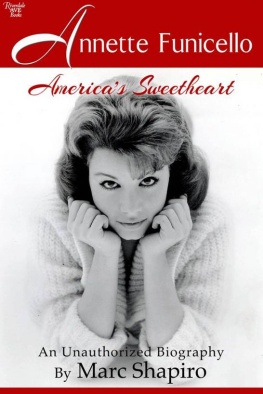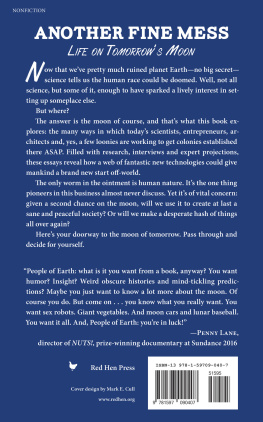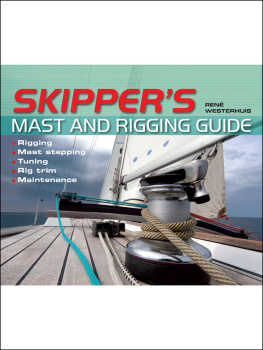My Year Before the Mast
Copyright Annette Brock Davis 1999
All rights reserved. No part of this publication may be reproduced, stored in a retrieval system, or transmitted in any form or by any means, electronic, mechanical, photocopying, recording, or otherwise (except for brief passages for purposes of review) without the prior permission of Hounslow Press. Permission to photocopy should be requested from the Canadian Copyright Licensing Agency.
Hounslow Press
A Member of the Dundurn Group
Publisher: Anthony Hawke
Co-ordinator: John Stratton
Editor: Helen Hatton
Copyeditor: Barry Jowett
Design: Scott Reid
Printer: Transcontinental Printing Inc.
Canadian Cataloguing in Publication Data
Davis, Annette Brock, 1912
My year before the mast
Includes bibliographical references
ISBN 0-88882-207-3
1. Davis, Annette Brock, 1912-. 2. Women sailors Canada Biography. 3. Sex discrimination against women. I. Title
HD6073.S42C3 1999 387.5'092; C99-930911-0
1 2 3 4 5 03 02 01 00 99
We acknowledge the support of the Canada Council for the Arts for our publishing program. We also acknowledge the support of the Ontario Arts Council and the Book Publishing Industry Development Program of the Department of Canadian Heritage.
Care has been taken to trace the ownership of copyright material used in this book. The author and the publisher welcome any information enabling them to rectify any references or credit in subsequent editions.
Printed and bound in Canada.
Printed on recycled paper.
Hounslow Press 8 Market Street Suite 200 Toronto, Canada M5E 1M6 | Hounslow Press 73 Lime Walk Headington, Oxford, England OX3 7AD | Hounslow Press 2250 Military Road Tonawanda NY U.S.A 14150 |
Contents
Acknowledgements
Nearly seventy years span my adventures on LAvenir and their telling in this book. Over that period I have been indebted to many who encouraged me to write my story. In the present, I must first acknowledge the boundless assistance of Dr. John Stratton of Toronto, who has been the catalyst and guiding spirit in the publication of this book. It was he who told historian and editor Dr. Helen Hatton of my voyage and arranged for her to be given a copy of my manuscript. He then presented her professional comments and edited text to Tony Hawke of Dundurn Press. John gave generously of his expertise as a photographer and author in the exacting work necessary to select and prepare old snapshots and drawings for illustrations, and in the work of layout and proofing. Without Dr. Strattons generous willingness to bring together the various components essential in taking this work to publication, my manuscript would still be in the drawer. He has my deepest gratitude.
To Dr. Helen Hatton, Department of History, University of Toronto, my thanks for her assessment of the possibilities of my story, and for polishing my prose, professionally and excellently, yet with remarkable understanding, so that my individual voice was not lost.
At Dundurn Press, the enthusiasm of Tony Hawke, Director of Publishing, brought me so much encouragement, enabling me to complete the additional work needed for publication.
From the past, so many figures stand out. Without the willingness of Gustaf Erikson, owner of the Erikson Line, to break untold centuries of tradition, I would never have set foot on LAvenir, where Captain Nils Erikson assessed me fairly as a crew member. My companions on the voyage crew, officers, and passengers all made their own individual, indelible contributions, shaping and colouring my year before the mast.
During my many visits to her in Oxford, Barbara Strachey Halpern encouraged me to write my story, and made suggestions from her memories of the trip to Australia on LAvenir.
Captain Eino Koivistoinen, author of Billowing Sails, with a chapter on our meeting at Port Germein, and Commander Alan Easton, author of 50 North, both appear in the text, but I am grateful for many years of friendship. Thanks to Willa and David Walker, Mrs. Simpson of Knowlton, Kate Stout, Edward and Linda Novarro of Houston, and Prof. Arthur Motyer, who all gave much encouragement. Philip Hicken of the School of Practical Art in Boston and Nantucket pronounced, Your painting is 99% better than your writing!
Finally, heartfelt thanks to my dear daughter Ann Gale Natali, for her wonderful support and unstinting time in arranging for copies, specialty photographic work, and in acting as liaison between myself, John Stratton, Helen Hatton, and Tony Hawke.
Chapter 1 Getting Under Way
She lay at anchor in Copenhagen roadstead, her name reflecting from her bows in odd distortions of the word LAvenir. Mist wove through the rigging, hiding her topmasts and muffling the drumming inside the barques steel hull. Down in her emptied coal hold, the knocking of hammers was deafening, and the coal dust was so heavy that the fog outside seemed clear by comparison. Two lanterns flickered, illuminating here a Slavic cheekbone and there a Viking jaw, but their smoke obscured so much that the form of a girl me, that is was indistinguishable among the dozen seamen chipping the rust.
For four hours the hammering had been striking through me as though it was the wave vibrations of the universe. Yet here in this black hell, I had found the world I had desired above all. Like the barque LAvenir, I had been at anchor too long. Now we both awaited the wind that would sail us to Australia. For a moment, while realizing this, I let my weary arm relax so that it dropped to my side. Suddenly I felt a whack on my left hand.
HA! You no goot. You stop verk. A big Finn, an able seaman, seized my wrist, then flung back the cuff of my fishermans jersey to squint at the luminous dial of my Canadian watch. Two hour mera nu, he bellowed in his Swedo-English. The others did not hear his announcement of two more hours till knock-off time; all were isolated by oceans of racket on islands of their own thoughts.
How long was an hour to me? A moment, when reckoning the years in which I had endeavoured to sail in such a vessel. LAvenir! Her very name meant the future. Now it was the present, September 21, 1933 (my twenty-third birthday), and this four-masted barque was outward bound to Australia.
LAvenir trailed at the end of a line of sailing ships which for two thousand years had opened up the world to man through the sea-borne trade, from the coasters of the iron age to the clippers of the 1800s. Her owner, Gustaf Erikson, lived in the far away Aland Islands, which lie between Sweden and Finland. This remarkable shipowner had built up a fleet of twenty-three great sailing vessels, which he made pay when no one else seemed able to do so. Shipmates told me Erikson can afford to lose a ship a year and remain solvent, as he carries his own insurance. The ships, which had no means of propulsion other than wind power, carried grain, mostly from Australia to Europe. The long sailing voyage served to warehouse the grain, so that it arrived in time for the European markets.

















